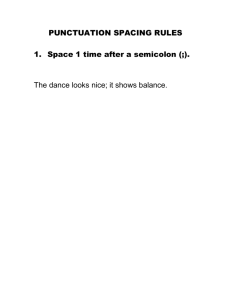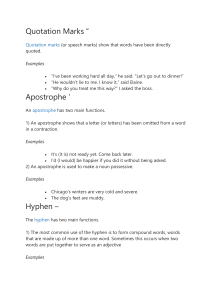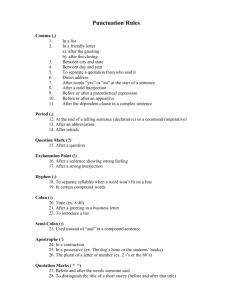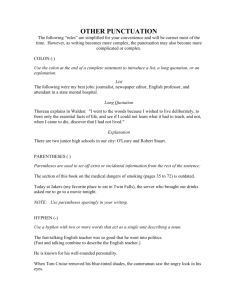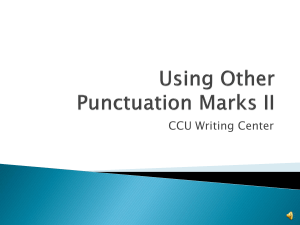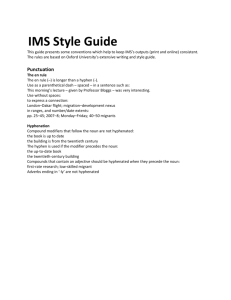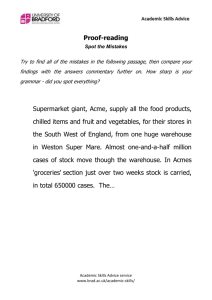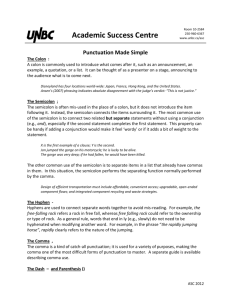PUNCTUATION SPACING RULES
advertisement
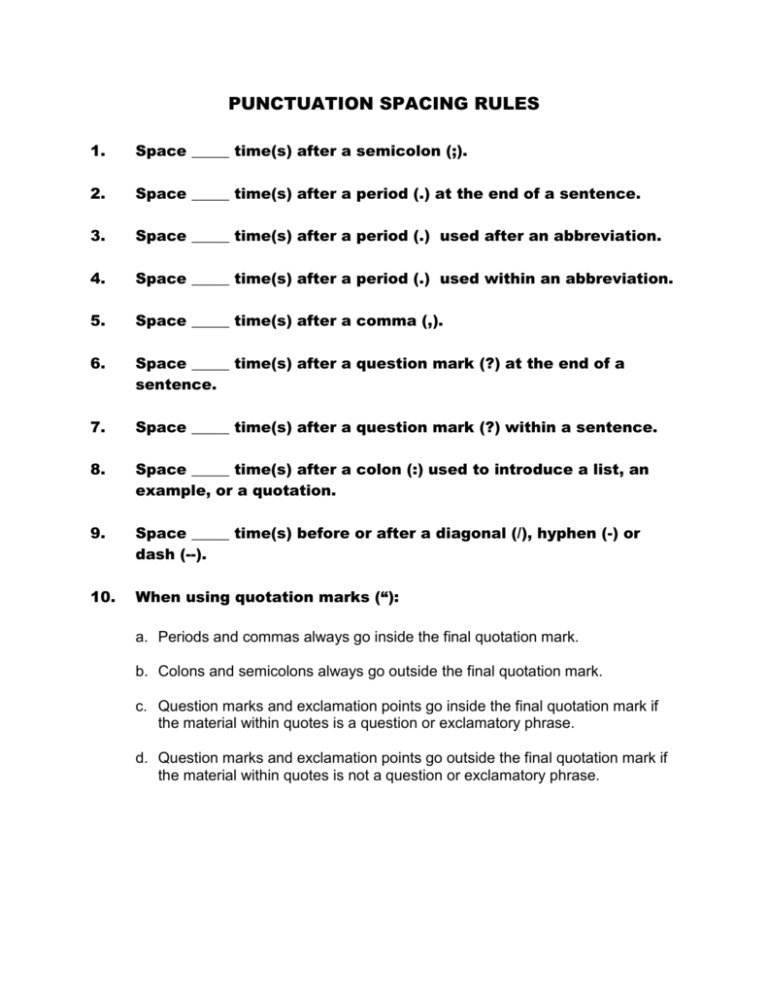
PUNCTUATION SPACING RULES 1. Space _____ time(s) after a semicolon (;). 2. Space _____ time(s) after a period (.) at the end of a sentence. 3. Space _____ time(s) after a period (.) used after an abbreviation. 4. Space _____ time(s) after a period (.) used within an abbreviation. 5. Space _____ time(s) after a comma (,). 6. Space _____ time(s) after a question mark (?) at the end of a sentence. 7. Space _____ time(s) after a question mark (?) within a sentence. 8. Space _____ time(s) after a colon (:) used to introduce a list, an example, or a quotation. 9. Space _____ time(s) before or after a diagonal (/), hyphen (-) or dash (--). 10. When using quotation marks (“): a. Periods and commas always go inside the final quotation mark. b. Colons and semicolons always go outside the final quotation mark. c. Question marks and exclamation points go inside the final quotation mark if the material within quotes is a question or exclamatory phrase. d. Question marks and exclamation points go outside the final quotation mark if the material within quotes is not a question or exclamatory phrase. SYMBOLS @ at # number (before a figure) & and # pound (after a figure) % percent ‘ feet $ dollar (s) “ inches, ditto = equal * notation, multiplication + plus, addition - minus, subtraction, hyphen -- dash (2 hyphens) / diagonal SPACING RULES: 1) Leave _____ space(s) before and after the following symbols: @ & (with words or numbers) + (in an equation) = * - (in an equation) 2) Leave _____ space(s) between a figure and the following symbols: % “ & (with initials) - (hyphen) / (diagonal) # ‘ @ (email address) -- (dash) 3) Leave _____ space(s) after these symbols when they are followed by a figure: $ + (positive number) # - (negative number)
